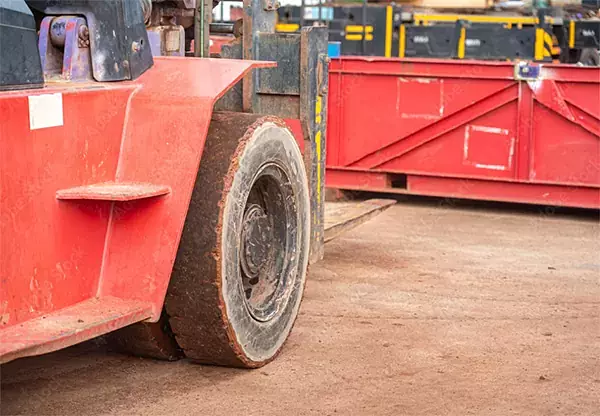 How to Choose the Ideal Forklift for Rough Terrain Operations
How to Choose the Ideal Forklift for Rough Terrain Operations
When operating forklifts on uneven outdoor surfaces or rough terrain, having the right equipment is crucial for safety and efficiency. The ideal rough terrain forklift has high ground clearance, grippy and durable tires, and technologies to enhance stability and control. Proper vehicle selection can improve operator safety and workload.
Outdoor Pallet Jacks
Standard pallet jacks with small hard wheels are unsuitable for outdoor use on anything but smooth concrete. All-terrain and rough terrain pallet jacks have oversized, treaded tires for rolling over dirt, bricks, landscaping, gravel, and more. The right pallet jack model can handle these conditions while lifting and pulling heavy skidded materials. Outdoor pallet jacks need enhanced durability and traction for landscaping and construction sites. Here’s what to look for when selecting the best forklift for outdoor and rough terrain applications:
Forklift Tires
The most vital component is the tires. Solid pneumatic tires offer longevity over air-filled types before needing replacement because they are constructed with solid, polyurethane filler instead of compressed air. This solid material is more resistant to punctures and leaks compared to the thin inner tubing and tire walls on air-filled tires. Without the risk of gradual or sudden air loss, solid tires maintain their original shape and performance for longer without needing to be re-inflated or replaced. Lug tread patterns provide grip on loose dirt, gravel, mud, and uneven ground. Consider tire size as well – wider vs narrower and diameter impact performance. Dual tires on the rear further enhance stability. The proper tread and compound prevent slipping on slopes or loose ground.
Clearance
Look for models that elevate the main frame and components well above the tires and ground. Higher clearance reduces the chance of components hitting bumps, getting stuck, or scraping over obstacles. A clearance of 8 inches or more is ideal for very rough conditions. More clearance allows navigating over rocks, holes, or hilly areas.
Stability Technology
Modern stability controls can make rough terrain forklifts much safer. Features like anti-tilt systems, hill hold assist, load sensing valves, and speed control based on the steering angle and mast height all help prevent tipping accidents. These aids compensate for off-center loads and tricky terrain. Advanced electronics provide a safer ride over uneven surfaces.
Forklift Dimensions
An overall size and dimensions of a rough terrain forklift impact where it can be utilized. More compact models may be better for tight access areas. Bigger forklifts have higher lifting capacity but require more space to maneuver. Consider the aisle width, door access, and storage areas when choosing the suitable capacity and size.
Consider using tire chains
In certain applications like snow or mud, temporary tire chains can boost traction in low-grip situations. But be aware that they aren’t suitable for long-term use on paved surfaces due to excess wear and tear. Add tire chains only when needed in slippery conditions.
Pursuing sustainability has become both a priority and an imperative across industrial sectors. New technologies aim to balance durability, safety, and performance goals with reduced environmental impact through material efficiency and lifecycle considerations.
In summary, prioritize ground clearance, grippy and durable lug tread tires, and the latest stability/traction aids when choosing the best forklift trucks and jacks for unreliable outdoor surfaces. Consider the lifting capacity required and consult with a professional, such as NFE-LIFTS to find a suitable machine for the environment.
